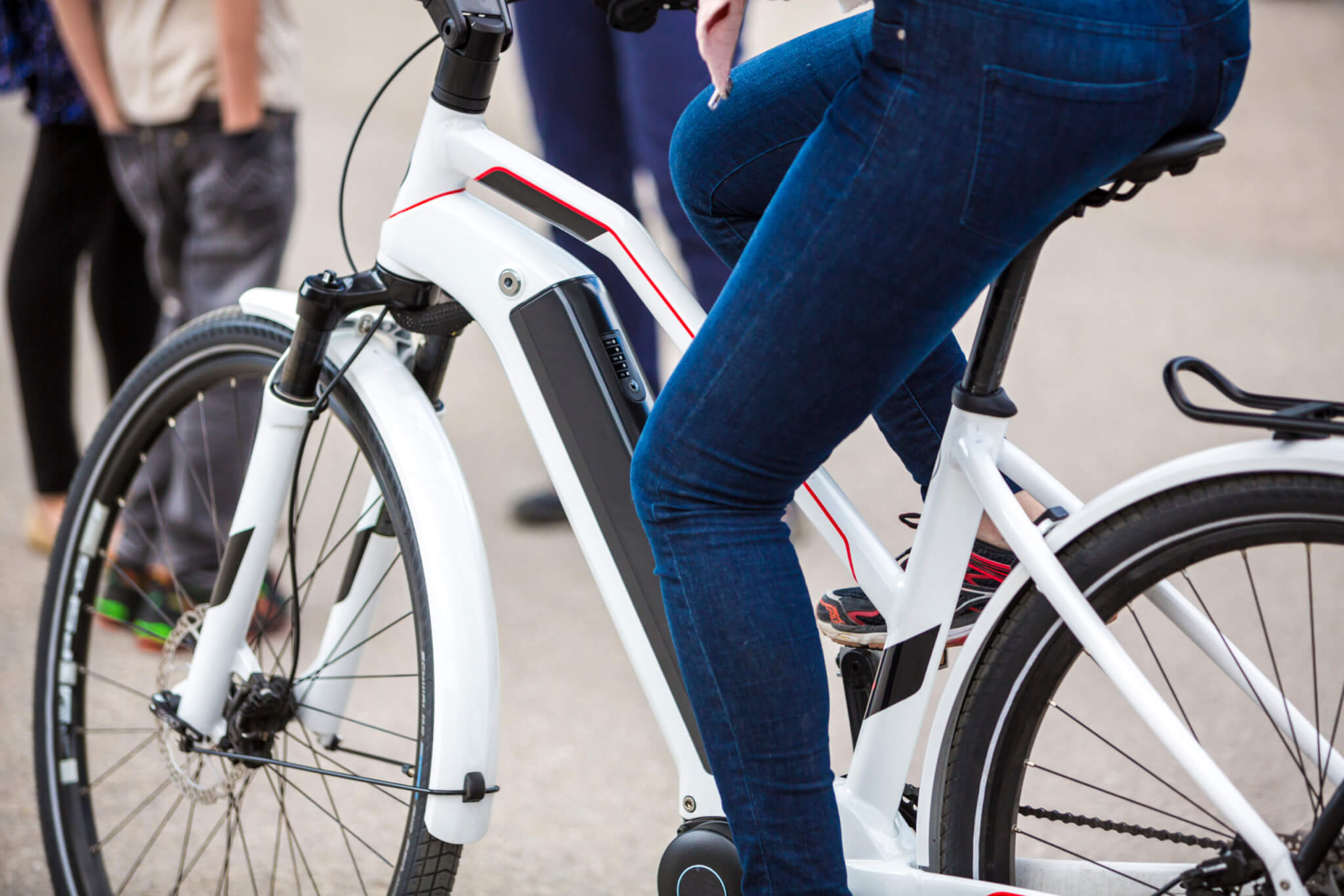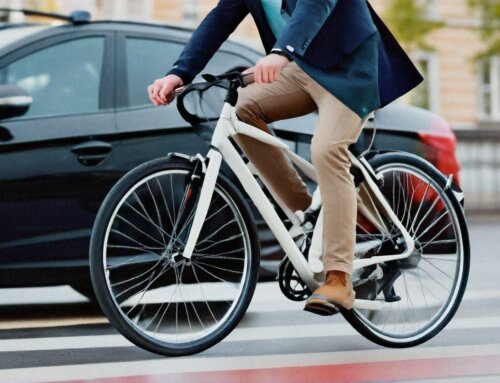The headline of a recent article in the Daily Mail leads with the question:
“End of the road for e-bikes?”
The second part of the headline, in effect, answered the question by giving us the reason why the article’s author believes the end of the road may be near for the electric bike.
“Number of modified ‘death traps’ seized by Police nearly doubles in a year amid growing safety concerns.”
Whether the end is near for all types of electrically assisted pedal cycles is open to debate. We also have to ask if we want to see the end of e-bikes because when the bikes themselves are within the law and are ridden legally, they are a force for good.
Before getting to the crux of the Daily Mail’s article, it’s worth looking at what e-bikes are, what constitutes a legally compliant e-bike, and, by default, what makes an e-bike illegal.
What is an e-bike?
E-bike, e-cycle, electric bicycle and ‘electrically assisted pedal cycle’ are, in effect different terms for the same thing – a pedal cycle that has a small motor fitted so that as well as being capable of propulsion by the use of pedals alone, like a standard bicycle, it can also be propelled with the assistance of the electric motor.
The e-bike still has to be pedalled, but the effect of the motor is that the rider expends less energy to achieve the same effect as would be gained from pedalling hard. If an e-bike can be ridden without pedal power, for instance, by modifying it, it is not an e-bike. It is a motorcycle.
What are the legal requirements for electric bikes?
The Driving and Transport section of the Government website sets out the rules relating to electric bikes.
The requirements are as follows using the official term ‘electrically assisted pedal cycles, (EAPCs):
- An EAPC must have pedals to propel it.
- The power output and name of the motor manufacturer must be clearly shown on the motor.
- The EAPC must show the battery’s voltage or the bike’s maximum speed.
- The maximum permitted power output of the electric motor must be no more than 250 watts.
- The electric motor should not be able to propel the bike when the speed exceeds a maximum of 15.5 mph.
- EAPCs can have more than two wheels.
As long as an electric bike meets these requirements, it is a pedal cycle, and you can ride one on the same types of highways, cycle paths, and other routes where pedal cycles are allowed.
The regulations governing EARCs are ‘The Electrically Assisted Pedal Cycles Regulations 1983’ and ‘The Electrically Assisted Pedal Cycles (Amendment ) Regulations 2015’, which updated the 1983 regulations.
When is an e-bike not an e-bike?
When a bike doesn’t meet the criteria set out above, it isn’t an e-bike. It’s a motorcycle, so to ride a bike that doesn’t meet the requirements of an EAPC, you’ll need to register the vehicle, possess a driving licence and insurance, and wear a helmet when riding the bike.
Why are e-bikes so popular?
- E-bikes make cycling make cycling much more effortless. The electric motor’s assistance makes pedalling significantly more manageable, meaning that even on journeys with relatively flat terrain, the cyclist expends less energy, meaning they arrive at their destination without their clothes soaking with sweat from hard pedalling.
- E-bikes come into their own on hill climbs. The power-assisted bike helps cyclists to take inclines in their stride.
- Starting off requires less exertion, and when the cyclist feels they need extra assistance, the motor is there to assist them.
- The result is shorter journey times, meaning the rider gets to their destination quicker. Commuters get to work faster and without feeling dishevelled from an arduous journey.
- Electric bikes enable those less physically active to take up cycling and, in the process, they get fitter.
- Charging the factory-fitted motors is inexpensive, and as long as the motor is compliant, it cuts out when the speed gets up to 15.5 mph, and no tax or insurance is required.
So, what concerns does the Daily Mail’s article raise about unregulated e-bikes?
The Daily Mail article we referred to at the beginning of this blog revealed that the number of police seizures of illegally modified e-bikes has almost doubled in the past year, with 937 electric power-assisted bikes confiscated in the year to 11th of August.
City of London Police alone seized 295 e-bikes in the year.
Some riders have been defying the regulations relating to electric bikes to such an extent that police forces such as the Met and City of London Police in London are carrying out targeted operations to catch offenders. What they found astonished them:
- One of the confiscated e-bikes had been modified to such an extent that the bike could achieve a speed of 70 mph. It also had an electronic display showing it had covered 6,000 miles!
- The police caught another e-cyclist riding a bike with a motor fitted to allow it to reach a maximum power output of 500 watts, double the legal limit of 250 watts.
- The same bike had heavy, worn tyres and a bundle of loose electricity wires stored in a very wet cycle pouch, which could have caused severe harm to the rider or others in the vicinity had the motor set on fire. Officers at the scene described the bike as a ‘death trap’. The owner of the e-cycle was a fast food delivery driver, and the speed between delivery points was hugely important to him.
- One police officer said he had overseen the confiscation of an e-bike weighing more than 50kg and that could reach up to 60mph – a lethal weapon when ridden at maximum speed, one that could seriously injure or even kill a pedestrian in the event of a road traffic accident.
- According to the Mail article, when the police catch someone using an illegally modified electric bicycle, whilst they seize the e-bike, they don’t usually prosecute the rider for further offences, such as not having number plates or insurance.
- Officers have discovered that some modified e-bikes are powered without using the pedals, which, in effect, means they should be classed as electric mopeds or motorcycles that ought to be registered and taxed.
What types of cyclists are using modified e-cycles?
The police officer quoted in the Daily Mail’s news item suggests that the type of cyclists riding modified electric bikes covers a broad section of society and includes commuters and food delivery workers. Criminals, especially on the streets of London, use them to ride close enough to unsuspecting pedestrians and snatch mobile phones out of their hands!
What other problems are caused by the use of modified bikes?
Police have identified several serious problems associated with the use of modified cycles:
Pedestrian Accidents
The weight of the modified e-bikes, combined with the speeds they can reach, makes them a serious threat to the safety of pedestrians, especially when ridden on pavements (as many people reading this article will attest to having witnessed themselves). The Mail’s article quoted Tanya Braun, from the walking charity Living Streets, who told the Mail that modified e-bikes:
“Pose the same danger and provoke the same fear as a motorbike coming up alongside a pedestrian.”
Electric scooters and regulation pushbikes have long been a scourge of pedestrians on pavements, especially in London, Cardiff and other big cities. However, when e-bikes, particularly modified e-bikes, are ridden on pavements, the chance of people getting seriously injured or killed due to an e-cycle accident on the pavement is high.
Fire Risks from Modifying the Electric Motor and Battery on E-bikes
The extra power generated by modified electric bikes comes from fitting e-bike conversion kits. Since mainstream bike dealers don’t sell or fit conversion kits, e-bike users try to fit them themselves. DIY battery and motor conversion kits are usually large enough to produce higher voltages and operate larger motors than the regulations allow.
London Fire Brigade advises people to buy conversion kits from reputable dealers and not to try fitting their own. Faulty batteries and the botched fitting of conversion kits have already caused fires either while the bike is being used or more often when the batteries are on charge. The Guardian reports that eleven people lost their lives in the UK due to e-bike fires in 2023.
There is currently no Kitemark or other certification mark relating to e-bike conversion kits to ensure they are safe.
If I get injured in a pedestrian accident caused by the rider of an electric bike, could I claim for personal injury compensation?
There is no legal requirement for e-bike riders to hold insurance where the bike is legally compliant and used in a lawful manner.
Individuals may wish to take out bike insurance coverage to protect themselves in the event of theft or injury. They can also take out third-party insurance to cover their liability if a personal injury claim is brought against them following an accident.
So, suppose an electric bike crashes into you whilst you are crossing the road, and you suffer injury. In that case, you can sue the rider for negligence knowing that if you win your claim, the compensation awarded to you will be paid by the e-cyclist’s insurance company.
Unfortunately, it’s more likely the electric cycle rider will not be insured. If they are riding a legally compliant e-cycle and on a cycle path or anywhere else pedal bikes are allowed, and they collide with you, causing injury, your only means of getting compensation from the e-cyclist who caused the accident is suing them.
However, whether they would be able to pay you compensation from their own financial resources is a moot point and something to be considered seriously before embarking on the cost of issuing court proceedings and serving them on the e-cyclist responsible for your accident.
Can I make an MIB claim if the e-cyclist who collides with me, a pedestrian, is not insured?
In a nutshell, the MIB or Motor Insurers Bureau is an organisation that will handle your personal injury claim if you’ve been in an accident with an uninsured or untraced motorist that wasn’t your fault. If successful, the MIB will pay your injury compensation.
There is no recourse to the Motor Insurers Bureau where the e-cycle that collided with you meets the requirements of the EAPC because it is classed as a pedal bike, i.e. it’s not a motor vehicle. The MIB will only deal with claims against uninsured or untraced motorists.
Ironically, your best chance of enforcing a compensation award against an e-cyclist responsible for causing you injury would be if the e-bike that collided with you had been modified.
The bike’s specification would then fall outside the EAPC requirements so that it becomes classed as a motorcycle or moped; albeit one that is unregistered, unlicensed and uninsured. It would then fall within the definition of ‘an uninsured motorist,’ for the terms of the Motor Insurers Bureau Agreement, and if you prove your claim against the e-cycle rider, you should get paid compensation from the MIB.
Conclusion
The Daily Mail article we refer to in this blog raises some serious issues. However, despite the tenor of the Mail’s article being that e-bikes are a scourge on society, the reality is that most electric bikes are ridden perfectly compliantly and safely.
This blog has outlined the benefits of e-cycles: they allow more people to take up cycling, making commuting to work less tiring and journeys quicker. They are a healthy transport option and, in comparative terms, a reasonably inexpensive mode of transport.
Problems arise when e-cyclists disobey Rule 64 of the Highway Code,
“You must not cycle on the pavement,” and Section 72 of the Highway Act 1835, which prohibits carriages of any description riding on “any footpath or causeway by the side of any road made or set apart for the use or accommodation of foot passengers”.
Yes, really. We are still relying on a law from the 19th Century to tell us that cycling on the pavement is against the law, or maybe because the wording is rather vague.
Bicycles, E-scooters, and electric bikes should not be ridden on the pavement, except for ones that are split into separate cycle and passenger lanes.
Converted electric bikes are inherently dangerous because the very reason for modifying them is to remove the restrictions in place designed to make them safer.
Between 2022 and 2024, the Sunak Government ran a consultation called, ‘Smarter regulation: proposed changes to legislation for electrically assisted pedal cycles.”
The rationale was expressed as to make EAPCs attractive and viable travel options for more people. The consultation discussed increasing the legal power of electric bikes to 500 watts and allowing throttle assistance up to 15.5 mph to make EAPCs more accessible.
However, at a meeting of interested parties in April this year to discuss the consultation, a cycling industry safety expert expressed the dismay of many of those attending the meeting at the government’s proposals, suggesting they smacked ‘of a fantastical solution to an imaginary problem, that has not been logically thought through.’
Now, the new Starmer government has pledged via the King’s Speech after coming to power to:
“enable the UK to keep pace with technological advances, such as AI, and address challenges, such as the fire risk associated with e-bikes and lithium-ion batteries.”
Interestingly, the website Ebiketips reported that the Government Property Agency (GPA) has banned e-scooters and modified e-bikes from all government buildings and land and that all other e-bikes will have to be parked in external car parks or open areas, and charging their batteries will not be permitted.
Reducing the risk of fires caused by charging modified e-bike batteries is commendable.
Nevertheless, it’s fair to say that at the moment confusion reigns about the future of electric bikes in the UK
In the meantime, we have a void that suits no one.
Mooneerams Solicitors is a niche firm of personal injury solicitors based in Cardiff, London, Bristol and Swansea specialising in cycling accidents and pedestrian accident claims.
Posted in News









